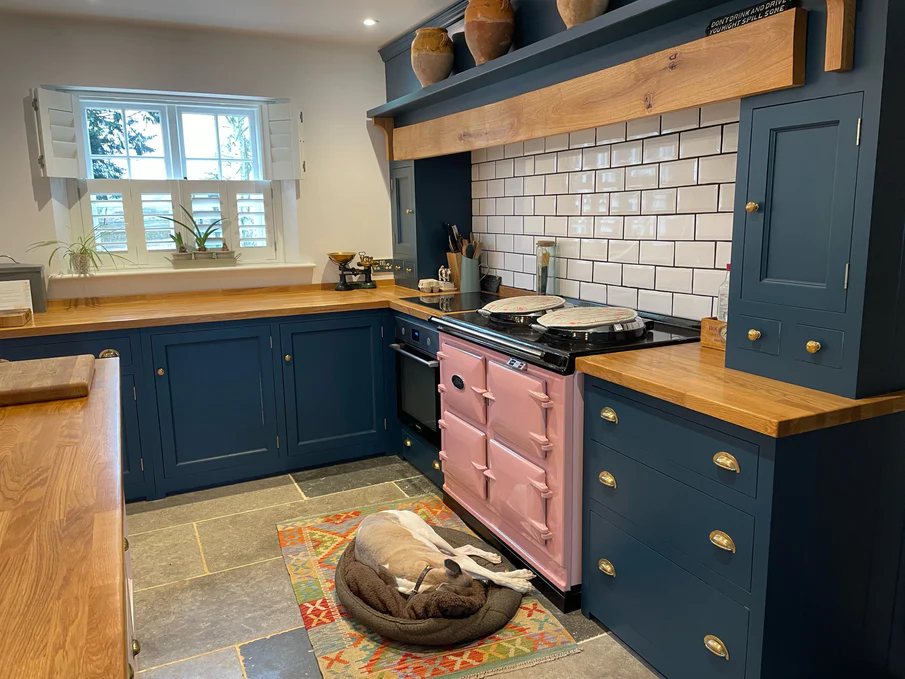
What is the History of the Aga Cooker?
Beloved by cooks around the world, Aga has been a kitchen staple for over 100 years. In this article, we take a look at how Aga came to be in the early 20th century, and how it has dramatically changed over the years into the models that we know and love today.
So, what is the history of the Aga cooker? Aga cookers were invented in the 1920s by Dr. Gustav Dalen in Sweden. He set about creating a cleaner, safer, and more convenient way of cooking. Throughout the 20th century, more environmentally friendly, economical models were developed, before looking to consumer convenience in the 21st century.
Read on to learn more about the Aga cooker, and how it has changed over the course of its 100-year history.
EARLY HISTORY OF THE AGA COOKER
Aga Cookers are the brainchild of Swedish Physicist, Dr. Gustav Dalen. He began designing and creating the very first version of the Aga in the 1920s after being injured at work and forced to convalesce at home. During this time, he noticed how dangerous, dirty, and time consuming conventional cookers were to use, and set about inventing something better that was clean, safe, and more economical. After a number of years of trial and error, the first version of the Aga Range Cooker was born.
Dr. Dalen created a cooker that completely changed the lives of housewives around the world in the early 20th Century. His invention was an immediate success, and soon made its way to the UK, which was its home until 2017.
AGA COOKERS THROUGH THE MID-20TH CENTURY
Throughout the 1930s and 1940s, the UK’s interest in Aga cookers really took hold, with a little help from David Ogilvy (before he founded the Ogilvy & Mather advertising agency), who released an article entitled The Theory and Practice of Selling an AGA Cooker. Forbes magazine described it as “the finest instruction manual ever written”, and attributes it to the growing success of Aga cookers during this period. Domestic demand rose significantly, resulting in a 6-month waiting period for new Aga cookers.
Meanwhile, during the war years, Aga played its part by supplying British forces with Aga cookers for munition works, canteens, and hospitals, helping to keep soldiers warm and fed during difficult times.
But, it wasn’t until the 1950s that new designs and colour options were introduced. For 34 years, Aga cookers were only available in cream! In 1956, the Aga De Luxe model was introduced, and for the first time was available in pale blue, pale green, grey, and white. By 1960, Aga had introduced the iconic black lozengo logo that is still used today.
However, the changes made mid-century weren’t just cosmetic. People began wanting cleaner, more convenient energy sources, which led to the introduction of oil and gas-fired Agas in the 1970s.
AGA COOKERS IN MODERN TIMES
In 1981 Aga celebrated its 50th birthday and, following on from the demand for alternative fuel sources in the 1970s, Aga began working on even cleaner models. In 1985, they launched their first electric model. This was the 2-oven EC2 model, quickly followed by the 4-oven EC4 in 1987. By 1996, further electric models had been launched, including the Aga Module – the perfect addition to traditional Agas that made modern life a little easier.
During this time, the brand saw a great deal of representation in the media with a visit from Prime Minister, Margret Thatcher, and being the feature of Mary Berry’s new cookbook in the 1990s. This book established Mary Berry as the definitive authority on Aga cooking. In fact, The Mail described her as being “to Aga what Pavarotti is to opera”.
At the turn of the new millennium, in 2003, Aga launched the 3-oven Aga model. This was an engineering breakthrough at the time, offering additional cooking capacity (as well as a new baking oven!), whilst operating on the same economic footprint as older models. This was quickly followed by the introduction of the 13-amp electric model in 2004, with the addition of a standard household plug, offering increased convenience – these new models needed no flue, and could be easily installed almost anywhere in the kitchen.
Moving into the 2010s, Aga saw great changes throughout the decade with the launch of many new models, including the Total Control – the first model that offers true modern convenience for owners, allowing them to turn them on and off like a conventional cooker. Around this time, Aga also launched its smallest and largest ever models, the Dual Control, and the Aga 60.
Towards the end of the decade, Aga also made changes to its infamous hotplates, introducing models with induction hobs – the eR3 series. Meanwhile, the eR7 series even offers touchscreen capabilities and multiple heat settings that control each oven and hotplate independently, enabling owners to have more control over energy consumption – a key priority in the modern day.
THE FUTURE OF AGA COOKERS
Aga has made great strides over the past few decades to make their cookers more environmentally friendly, whilst offering greater convenience to owners. We don’t know what the future holds for Aga, but we’re sure that whatever comes next will competently answer consumer demand of the time, as it has for over 100 years.
RECONDITIONED AGA COOKERS AT RANGE EXCHANGE
Range Exchange is the home of reconditioned Aga cookers that are like-new and of showroom standard. Whether you’re looking for modern electric models like the eControl and Total Control models, or a more traditional oil or gas-fired model, we have something for everyone.
Take a look at our range online today, or get in touch with us for more information.
